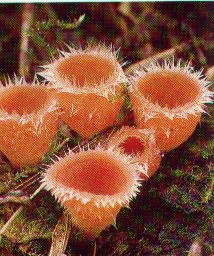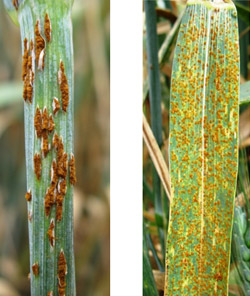The phylum Oomycota, alternatively called Peronosporomycetes currently comprises some 800�-1000 species. The vegetative hypha: Although some members of the Oomycota grow as sac-like or branched thalli, most of them …
Plasmodiophora brassicae: Plasmodiophora brassicae is the causal organism of club root or finger-and-toe disease of brassicas and was first described by Woronin (1878). The disease is common in gardens …
The Myxomycetes (zool.: Myxogastrea) are by far the largest group of slime moulds, comprising some 800 species in 62 genera. These are the familiar slime moulds so common on …
The reproduction by means of small spores is a cornerstone in the ecology of fungi. Although a single spore may have a negligible chance of reaching a suitable substrate, …
Whereas plants and animals form genuine tissues by their ability to perform cell divisions in all directions, fungi are limited by their growth as one-dimensional hyphae. None the less, …
What are fungi? About 80 000 to 120 000 species of fungi have been described to date, although the total number of species is estimated at around 1.5 million …
Genus Penicillium belongs to Ascomycetes group of fungi and is well known for its importance in antibiotic (penicillin) and food (cheese, meet products) industry. The name Penicillium is derived …
The phylum Ascomycota (colloquially called ascomycetes) is by far the largest group of fungi, estimated to include more than 32000 described species in 3400 genera. It is assumed that …
Classification: Division: EUMYCOTA Subdivision: MASTIGOMYCOTINA Class: OOMYCETES Order: PERONOSPORALES Family: ALBUGINACEAE Genus: ALBUGO OCCURRENCE: Albugo is an obligate parasite on a number of flowering plants. It is represented by …
Introduction: Rust diseases of wheat are among the oldest plant diseases known to humans. Early literature on wheat cultivation mentions these devastating diseases and their ability to destroy entire …


